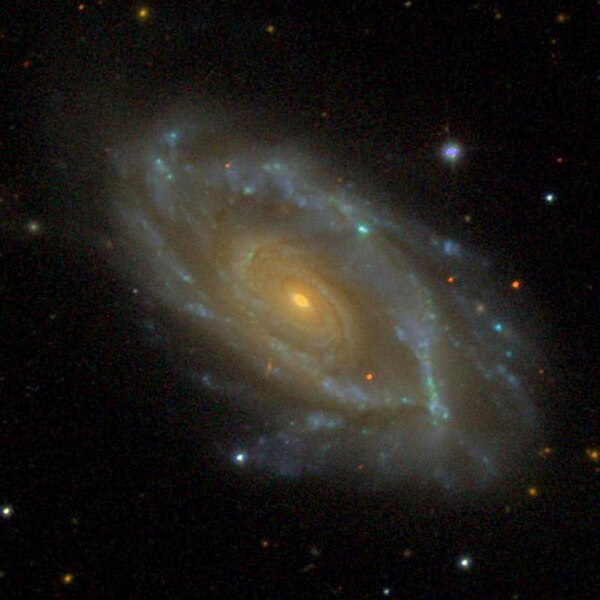The New General Catalogue of Nebulae and Clusters of Stars (abbreviated as NGC) is a catalogue of deep-sky objects compiled by John Louis Emil Dreyer in 1888. The NGC contains 7,840 objects, known as the NGC objects. It is one of the largest comprehensive catalogues, as it includes all types of deep space objects, including galaxies, star clusters, emission nebulae and absorption nebulae.
Know more about NGC
NGC 3646

NGC 3646 is a galaxy in the Leo constellation that has variously been described as "a strange spiral galaxy" of morphological classification Sc or SAa, or as "a ring-shaped galaxy". It was discovered by German-British astronomer William Herschel on 15 February 1784. NGC 3646 has a structure consisting of three parts: an inner hub, a rapidly rotating spiral, and an irregular outer ring surrounding the spiral with an angular feature at one point of the ring. Although estimates vary for its distance, the NASA/IPAC Extragalactic Database lists its distance as 67.49 ± 4.74 megaparsecs (220.1 ± 15.5 Mly). Burbidge et al. estimated that their measurements of motion in the outer ring were not consistent with stable circular orbits. Afanas'ev et al. argue that this conclusion was erroneous, based on incorrect measurements. Instead, they find a galaxy rotation curve that "places the galaxy among the most rapidly rotating and massive systems", "one of the largest and most luminous spirals in the local universe". NGC 3646 forms an isolated pair with a smaller companion galaxy, NGC 3649. The high rate of star formation in NGC 3646, the low rate in its companion, and the unusual shape of the outer ring in NGC 3646 may have resulted from interactions between these two galaxies.
More Images:

Sources:
Wikipedia Page: NGC 3646
NGC 3646 at In-The-Sky website
